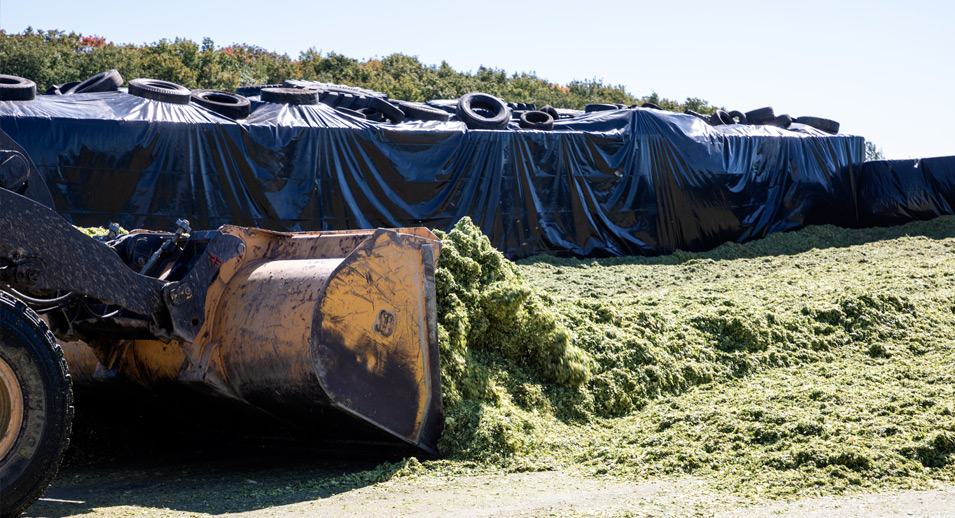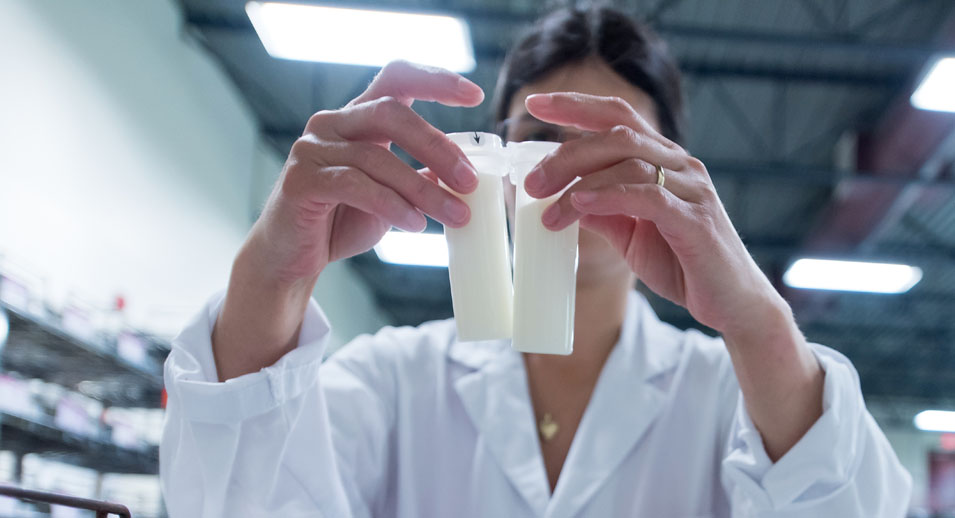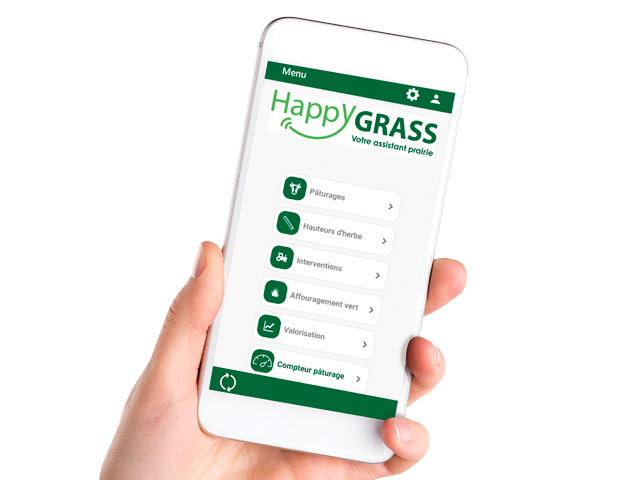Update on the Use of Silage Inoculants
- May 20, 2021
With such a wide array of silage inoculants on the market, it can be hard to know which one to choose. Thankfully, several solid studies have recently been published about these products and their effects. Here is a summary of the most recent scientific information on the subject.

Homofermentative Inoculants
This type of inoculant mostly contains Lactobacillus plantarum bacteria, but can also contain other species that generally belong to the Lactobacillus, Enterococcus, or Pediococcus genus. This type of bacteria converts the sugars in silage to lactic acid, resulting in a rapid drop in pH, thus improving the silage preservation process.
The most recent studies confirm that inoculating hay crop silage with homofermentative bacteria reduces dry matter and nutrient losses during the fermentation process. The research also demonstrates that this type of inoculant promotes increased milk production due to the improved quality of inoculated forages. These products, however, do not have a positive effect on corn silage, since this type of forage has a low buffering capacity and sufficient sugar levels to allow a natural rapid decrease in pH.
The monetary value of the quantity of forage that was « saved » due to the fermentation process is generally higher than the cost of applying these products, and that is without taking into account the positive effect on production. We can therefore affirm that the use of homofermentative inoculants on hay crop silage is cost-effective at the average application cost.
Heterofermentative Inoculants
This type of inoculant typically contains Lactobacillus buchneri bacteria but other bacteria from the Lactobacillus genus may also be present. These bacteria ferment a portion of the lactic acid to acetic acid, which inhibits the growth of yeast and mold, microorganisms that deteriorate forages in the presence of oxygen.
The most recent studies confirm that adding this type of inoculant will significantly improve the aerobic stability of silages. The reduced fermentation efficiency of these bacteria, however, can result in slightly higher dry matter losses, which is often compensated for by the improved aerobic stability. This type of inoculant does not have a significant effect on animal performance.
These inoculants can therefore be very useful when one suspects that the forage harvested will be prone to heating.
The Combos
We are seeing an increasing number of combos on the market. These products contain both homofermentative and heterofermentative lactic bacteria, to attempt to obtain the benefits of both types of bacteria. The results that are available up to now show that this type of inoculant improves fermentation and aerobic stability, while avoiding the slight dry matter losses associated with the less effective fermentation of heterofermentative bacteria. The positive effects on milk production that we see when using only homofermentative inoculants however, are lost.
Can inoculants improve digestibility?
Several avenues have been explored to try to use inoculants to improve silage digestibility. The results have not yet been satisfactory. In fact, the direct addition of enzymes does not seem to have shown any convincing positive results so far. The use of enzyme producing bacteria have also not shown consistent results; the products do not always work. Given the high cost of this technology, it might be best to wait for new, more conclusive information, before rushing out to buy some.
So what should I use on my silage?
Now that we have looked at what science says about silage inoculants, it should be easier to make an informed decision! To help you out, here is a summary of our recommendations.
Grass
| 30-50% DM | |
| At risk of heating* | Combo |
Little risk of heating | Homofermentative lactic bacteria |
| > 50% DM | |
| At risk of heating* | Propionic acid or heterofermentative lactic bacteria or combo |
Little risk of heating | No additives necessary |
Corn and cereals
| At risk of heating* | Heterofermentative lactic bacteria or combo or proprionic acid or ammonia |
| Little risk of heating | No additives necessary |
* Factors contributing to silage heating:
- High temperatures
- Poor compaction
- Silage exposed too long to oxygen before the silo is closed
- Inadequate sealing of the silo
- Uneven silo facing
- Inadequate recovery rate
- Silage transfer
Before you buy…
Before you decide to buy this type of product, it is important to keep in mind that the use of inoculants will never replace proper silage management. It is also important to respect the following practices in order to maximize the positive effect of inoculants:
- Follow the basic rules for making quality silage;
- Follow the manufacturers recommendations for product storage and application;
- Use a liquid inoculant for the driest silages (≥ 40% DM);
- Avoid exposing the inoculant to heat or the sun, whether in a bag, or dissolved in water;
- The temperature of the water should never be higher than 39 °C;
- The water should be free from contaminants that could kill bacteria (chlorine, hydrogen peroxide, etc.);
- Never leave an inoculant dissolved in water for more than 24 hours;
- Calibrate the sprayer regularly;
- Apply a minimum of 100,000 CFU (colony forming units) per gram of fresh forage;
- Use a fine spray to apply the inoculant in a uniform manner
- During harvesting with the forage harvester or silage blower.











